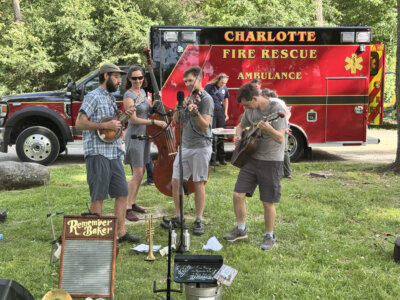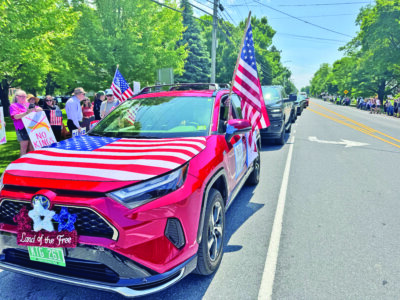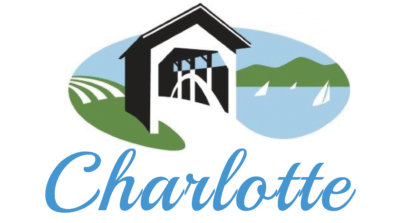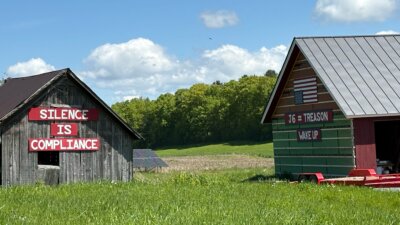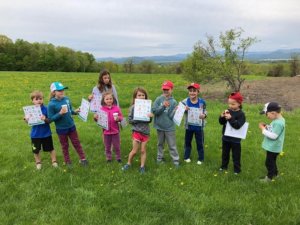Commentary: Where do we go from here? The will of the community?
What is the will of our community?
Are we more than one community based on where we live?
The town plan and land-use regulations divide the town into districts and outline the types of development appropriate in them with an eye on protecting “areas of high public value.” So, it would seem reasonable to say the will of the community has repeatedly approved what these documents stipulate.
The reality of where development occurs tells a different story.
People’s opinions about development are often swayed by their proximity to proposed changes. “Out of sight, out of mind” comes to mind.
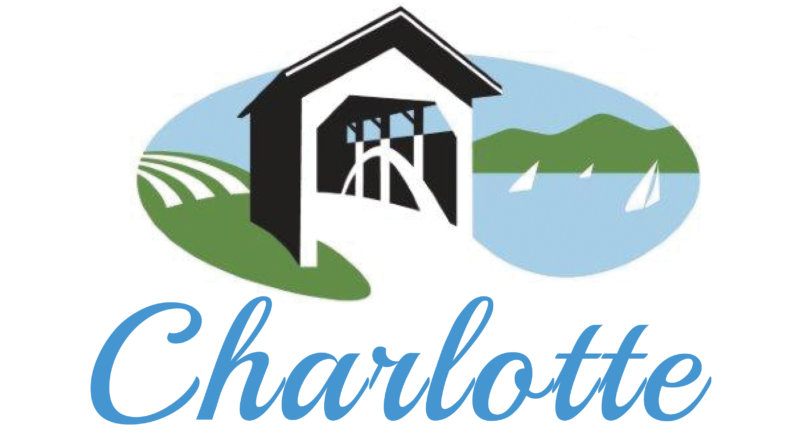 Charlotte is about to embark on a major two-three year planning project spearheaded by the Chittenden County Regional Planning Commission and the Charlotte Planning Commission called the Unified Planning Work Program. The primary goal is to update Charlotte’s town plan and land-use regulations so they reflect the true will of the community.
Charlotte is about to embark on a major two-three year planning project spearheaded by the Chittenden County Regional Planning Commission and the Charlotte Planning Commission called the Unified Planning Work Program. The primary goal is to update Charlotte’s town plan and land-use regulations so they reflect the true will of the community.
Larry Lewack, Charlotte town planner, said the planning commission and selectboard have been fully briefed on this project. According to Lewack, critical to this project is momentum and “broad outreach in town” to determine “the will of the community.”
Taylor Newton, planning program manager of the Chittenden County Regional Planning Commission, gave his presentation of the aforementioned two-three year unified planning work program to both the selectboard and planning commission in May. He outlined the timeline and various steps to complete amended land-use regulations and town plan. The most important aspect of this process is significant outreach to the town at large. Once collected, visual architectural models of what future village development might look like will be provided for feedback.
These visual models are critical, and perhaps one of the reasons articles 6 and 7 of the amended land-use regulations failed a few years back.
Kyra Wegman, member of the planning commission, said, “I think whatever the unified planning work program grant gives us in the way of paying for consultants, the debate will remain theoretical and, I suspect, pretty acrimonious, if recent history is any indication, without a clear visual representation of what they mean when they say, ‘development in the villages.’ It’s not a general messaging problem; it is just unspecific.”
Wegman continued, “Not being able to visualize exactly what was being proposed left a gaping hole where people’s most extreme imaginings could take hold.”
I agree. Many of those opposed to those articles said they didn’t want a “Kwiniaska Ridge” in Charlotte. This is an example of a worst-case scenario.
Often when presented with potential change one hears: “What is the problem we are trying to solve?”
The answer: The steady drumbeat of development in the rural district and lack thereof in the east and west villages.
Regarding development in the villages, planning commissioner Robert Bloch said, “The point is that even though our town plan contains this neat articulation of a vision and rationale for village development, which was approved by a majority of, I would guess, the usual 30 percent of voters who actually vote in these local elections, we are far from consensus on whether more intense village development should be undertaken, or how it should be undertaken.”
Considering this major two-three year effort, I asked Charlie Pughe, chair of the Charlotte Planning Commission, how important is it for the selectboard to be involved and supportive of this project as well as other committees and boards?
He said: “I see this effort as an ultimate reshaping of the Town Plan, making it more definitive and providing positive steps to achieve what have been aspirational goals before, yet seemed to remain out of reach. I think it is critical for the selectboard, as well as all of the other town boards and commissions, to participate. Everyone — trails, recreation, conservation — will all have interests that need to be addressed as part of the process. Beyond that, as broad of a cross section of the town as we can get, needs to participate. This effort has the potential to change how our village centers live and function, and we need to make sure we are moving in the right direction for Charlotte.”
Wegman, who with Robert Bloch, has been spearheading the Community Heart and Soul outreach said: “In any case, at the two Community Heart & Soul chili events we held, two values came up over and over again in conversation: people said we need more affordable housing in Charlotte, workforce housing; and folks spoke over and over about the natural beauty around us and wanting to care for it. I think if we persist in treating these two values like they are in absolute conflict with each other, it’s going to be hard to move forward with anything, when in fact I think there is a way to build a bit more housing, in a measured way, where our town plan is honored and our collective values are leading the vision.”
I agree with Wegman’s assessment, lack of housing and protecting the natural beauty (areas of high public value as identified in the town plan) must be considered as interdependent. Therefore, compromise is necessary on all sides.
The last deliverables of the unified planning work program for Charlotte are a preliminary engineering report; a draft engineering services agreement; and final design of a wastewater system in the west village. This part extends into March 2027 per Newton’s proposed master plan. That is, if there is a public will to attempt this. As stated in the Chittenden County Regional Planning Commission’s assessment of Charlotte’s land-use regulations, lack of municipal wastewater and water in the village districts is a significant obstacle to development.
“I have talked to and listened to people in town about concentrating development in the villages. Even those who voice support do it in a half-hearted way, with a sense of resignation in their voice, a feeling of inevitability, and maybe the idea that ‘I just hope we can do it reasonably well.’” Bloch said. “People who actually live in the villages express a level of concern or fear that the wonderful place they discovered will change.”
What are the next steps? A consultant will be hired in July-August and the project kicks off this September. October 2023 through February 2024 is the meat of the project called “village visions.” This is where outreach throughout the community will take place. This is where you come in.
Change is imminent, looming at our door. We need to understand the true will of the community to plan for the future.
(Peter Joslin is a former chair of the planning commission and a member of The Charlotte News board of directors. The opinions expressed here are his own and not necessarily those of the board.)
Related Stories
Popular Stories
If you enjoy The Charlotte News, please consider making a donation. Your gift will help us produce more stories like this. The majority of our budget comes from charitable contributions. Your gift helps sustain The Charlotte News, keeping it a free service for everyone in town. Thank you.
Andrew Zehner, Board Chair





